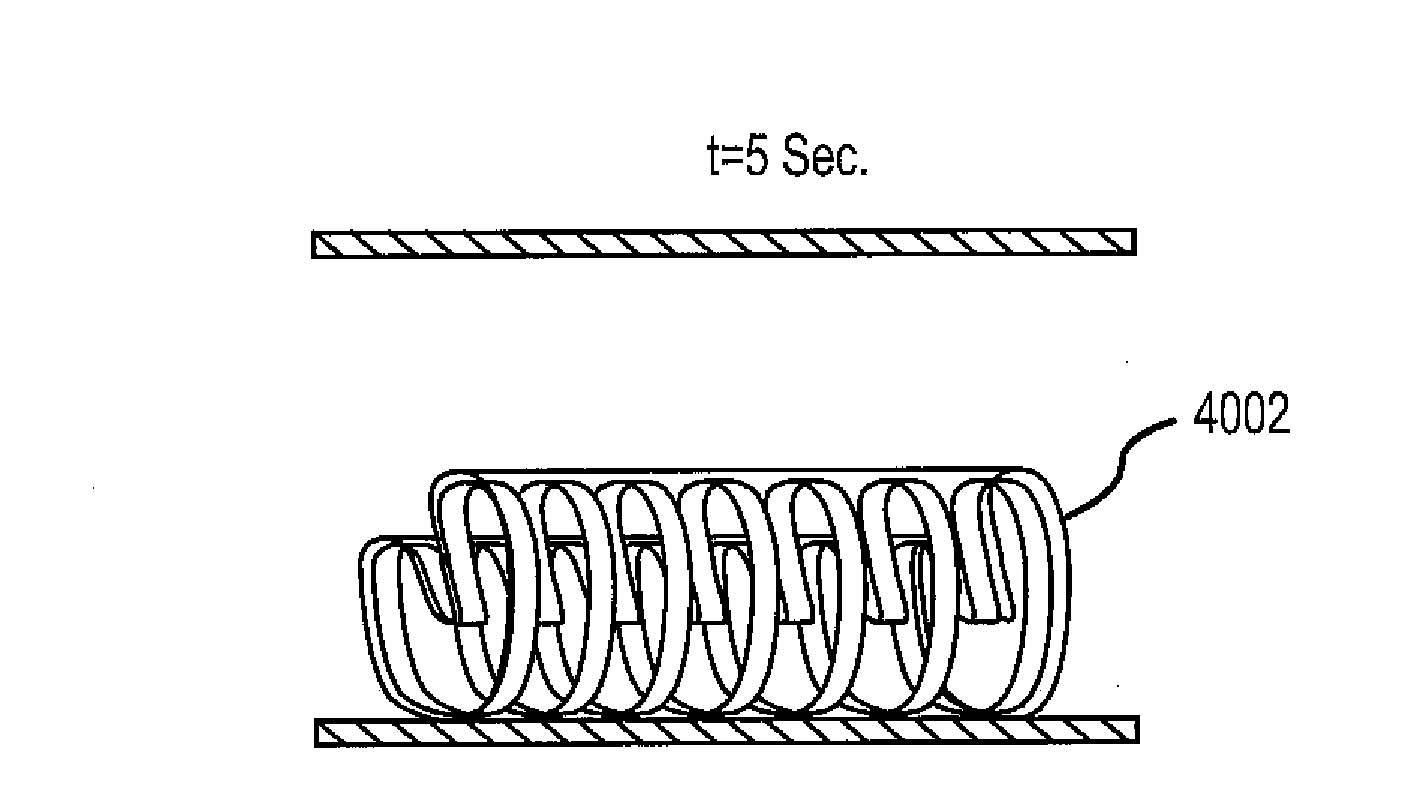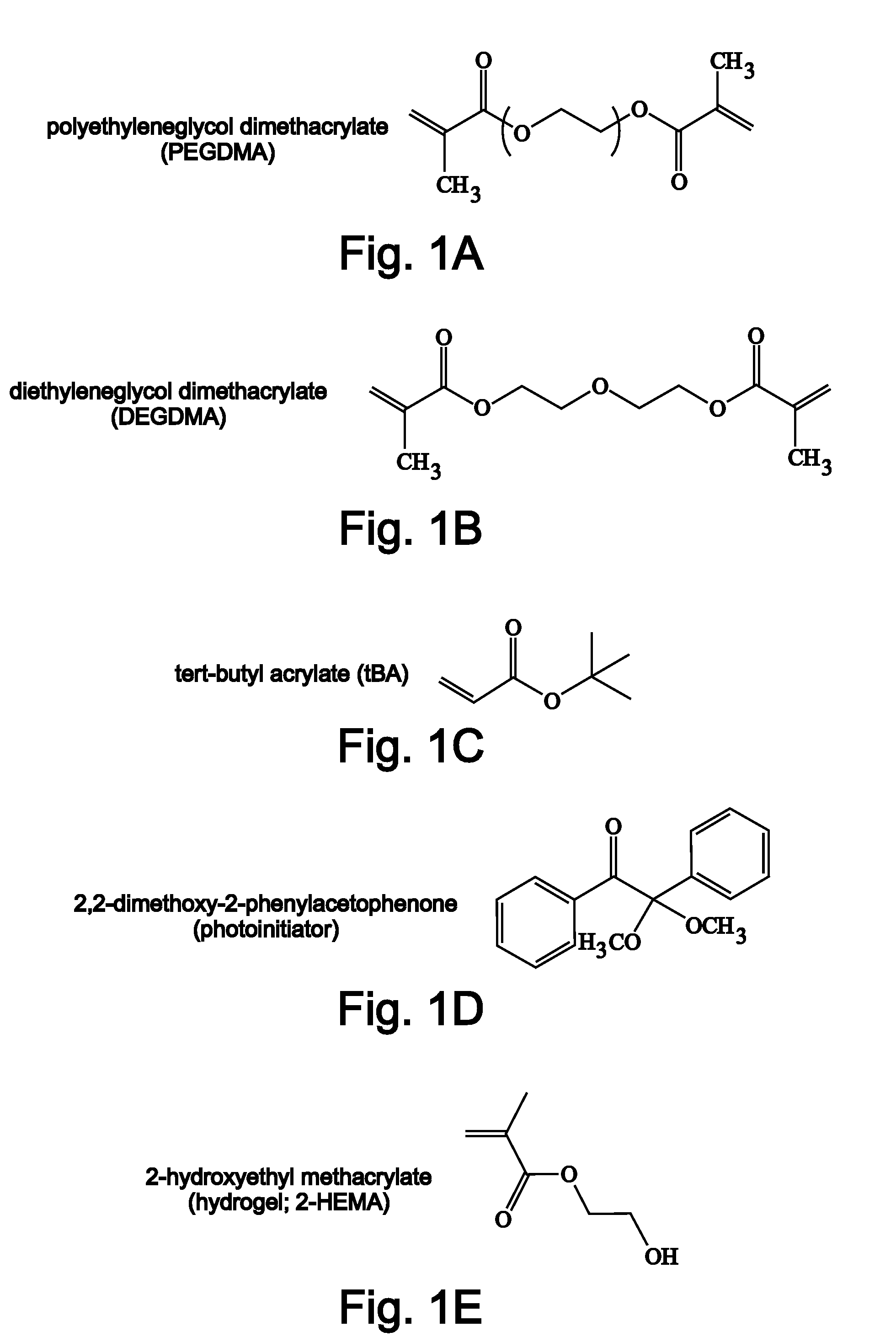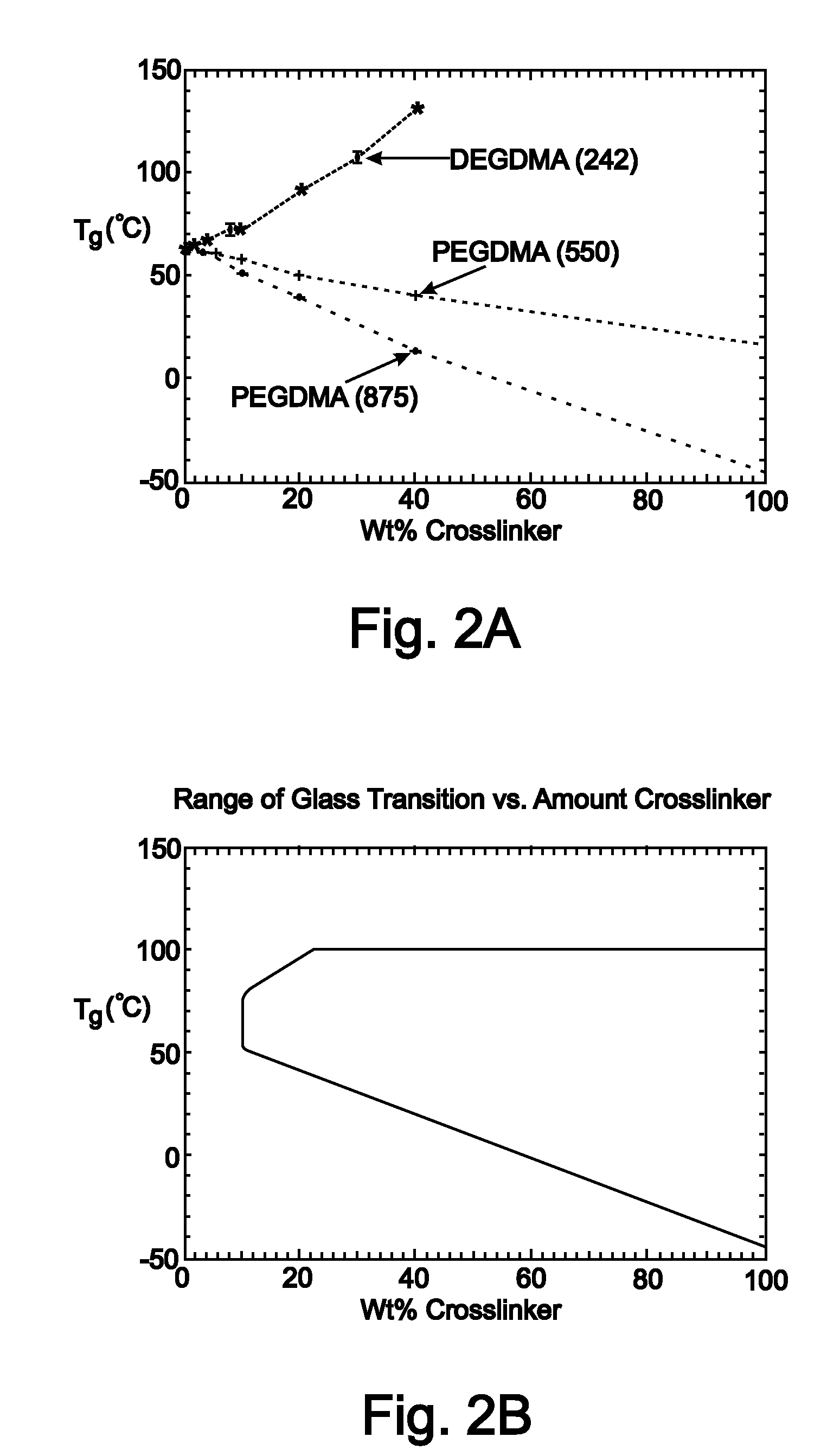Shape Memory Polymer Medical Devices
a memory polymer and medical device technology, applied in the direction of dilators, prostheses, blood vessels, etc., can solve the problems of limited ability to deliver drugs over long periods of time, mismatch between the mechanical properties of the stent and those of the host vessel, and limited thermomechanical respons
- Summary
- Abstract
- Description
- Claims
- Application Information
AI Technical Summary
Problems solved by technology
Method used
Image
Examples
example 1
Control of Chemistry to Vary Mechanical Properties of Stents
Protocol to Manufacture the Polymer Stents to Various Crosslinking Densities.
[0217]Tert-butyl acrylate (tBA), di(ethylene glycol) dimethacrylate (DEGDMA), poly(ethylene glycol) dimethacrylate (PEGDMA) with typical Mn=550 and Mn=875, and photoinitiator 2,2-dimethoxy-2-phenylacetephenone were ordered from Aldrich and used in their as received conditions without any further purification. Solutions were made by manually mixing the functionalized monomers at different mass fractions in a glass vial with 1 wt % photoinitiator. The solutions were injected into a thin-walled-tube mould to manufacture stents. The glass slides were separated with 1 mm spacers and coated with Rain-X, which acted as a non-reactive releasing agent. The thin-walled tube mould consisted of a Teflon rod (sizes: 3 mm-25 mm) sheathed with a slightly larger glass tube of diameter (3.2 mm-25.5 mm) (Allen Scientific) to create polymer tubes with a range of wall...
example 2
Control of Geometry to Vary Mechanical Properties of Stents
Protocol to Manufacture Solid Stents.
[0219]To manufacture solid stents, the glass tube was removed, leaving a long stent on the Teflon rod. Individual stents are then cut from the longer stent to a variety of lengths (0.5 cm-5 cm). The stent can be packaged as is, or with additional modifications, such as CNC machine modifications, which can be made based on application requirements, as detailed in Example 3 below.
example 3
Protocol to Manufacture Porous Stents
[0220]To manufacture porous stents with different shapes and amounts of wall material removed, a laser-cutter was used to cut slots into the stent in a predefined pattern when the stent is still on the Teflon rod. Hole patterns in the size of circles, diamonds, and circumferentially or longitudinally oriented slits have been created. The amount of wall material removed is varied from 10% to 50%. The stents are then cut to preferred lengths and are ready for packaging.
PUM
| Property | Measurement | Unit |
|---|---|---|
| Tg | aaaaa | aaaaa |
| glass transition temperature | aaaaa | aaaaa |
| glass transition temperature | aaaaa | aaaaa |
Abstract
Description
Claims
Application Information
 Login to View More
Login to View More - R&D
- Intellectual Property
- Life Sciences
- Materials
- Tech Scout
- Unparalleled Data Quality
- Higher Quality Content
- 60% Fewer Hallucinations
Browse by: Latest US Patents, China's latest patents, Technical Efficacy Thesaurus, Application Domain, Technology Topic, Popular Technical Reports.
© 2025 PatSnap. All rights reserved.Legal|Privacy policy|Modern Slavery Act Transparency Statement|Sitemap|About US| Contact US: help@patsnap.com



